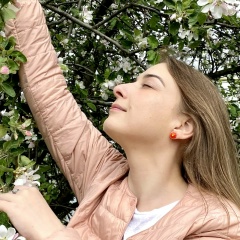Свою Первую симфонию Малер не очень любил («Если есть в ней что-то хорошее, — писал он своей подруге Натали Бауэр-Лехнер. — То это пассаж в финале», имея в виду геройский мотив, повторяющийся в последней части три раза), но, тем не менее, крайне ревностно к ней относился. Во-первых, переделывал он ее больше раз, чем любую другую свою работу (что, вполне возможно, связано с его малым композиторским опытом, но все-таки). Во-вторых, он чаще всего ее дирижировал (что, вполне возможно, объясняется тем, что из всех произведений Малера именно для исполнения Первой симфонии требуется меньше всего инструменталистов, но все-таки). В-третьих, он под конец жизни утверждал, что знает людей, которые правильно поняли все остальные его работы, но тех, кто правильно понял Первую симфонию, никогда не встречал (что, вполне возможно, объясняется тем, что сам Малер часто не мог до конца объяснить свою музыку, но все-таки). Как ее понимать — вопрос занимательный. За свою жизнь Малер дал несколько интерпретаций программы Первой симфонии. Многие из них друг другу напрямую противоречат, а с другими не до конца понятно, всерьез он их предлагал или в шутку. Мне лично нравится такая, описанная Буэр-Лехнер: в первой части просыпается лес и лесные звери — зайчики, лисички, птички; во второй в лесу появляется охотник; в третьей зайчики, лисички и птички хоронят случайно погибшего охотника. Четвертую часть Малер не описал, но можно предположить, что это пляски сердобольных животных на могиле — а еще лучше, костре, на котором горит гроб с телом, — губителя. Обычно Первую симфонию принято толковать как поэму о герое или как описание торжества природы, но история о зверюшках мне нравятся больше.
Mahler didn’t really like his First Symphony (“If there is something good in it,” he wrote to his friend Natalie Bauer-Lechner. “This is the passage in the finale,” referring to the heroic motif, repeated three times in the last part), but, nevertheless, he was extremely jealous of her. Firstly, he remade it more than once than any other work (which, quite possibly, is connected with his small compositional experience, but still). Secondly, he conducted it most often (which, quite possibly, is explained by the fact that out of all Mahler’s works, it is precisely for the performance of the First Symphony that the least instrumentalists are required, but still). Thirdly, at the end of his life, he claimed that he knew people who correctly understood all the rest of his works, but never met those who correctly understood the First Symphony (which, quite possibly, is explained by the fact that Mahler himself often couldn’t end to explain your music, but still). How to understand it is an entertaining question. During his life, Mahler gave several interpretations of the program of the First Symphony. Many of them directly contradict each other, but with others it is not completely clear whether he seriously proposed them or as a joke. I personally like the one described by Buer-Lechner: in the first part, a forest and forest animals wake up - bunnies, chanterelles, birds; in the second a hunter appears in the forest; in the third, bunnies, chanterelles and birds bury an accidentally dead hunter. Mahler did not describe the fourth part, but it can be assumed that these are the dances of compassionate animals on the grave - and even better, the fire on which the coffin with the body burns - the destroyer. Usually, the First Symphony is usually interpreted as a poem about a hero or as a description of the triumph of nature, but I like the story of the animals more.
У записи 2 лайков,
0 репостов.
0 репостов.
Эту запись оставил(а) на своей стене Никита Степанов






















